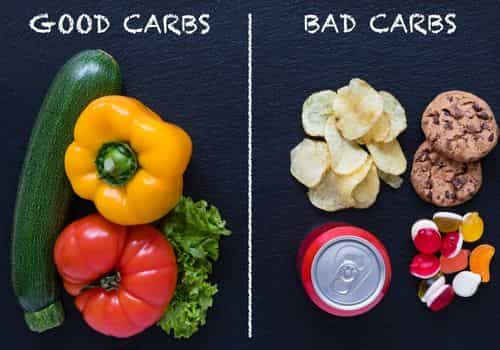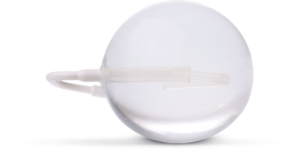Carbohydrates are an essential macronutrient that play a crucial role in providing energy to the body. They are classified into three main categories: sugar, starch, and fiber. Each type of carbohydrate has unique properties and health benefits, and it’s important to understand the differences between them in order to make informed dietary choices.
Sugar
Sugar is a simple carbohydrate that is composed of just one or two molecules. These types of carbohydrates are quickly absorbed by the body, providing a quick source of energy. However, consuming too much sugar can lead to weight gain and an increased risk of chronic diseases such as diabetes and heart disease. Examples of sugar include glucose, fructose, and lactose.
- Glucose is the main source of energy for the body and is found in fruits, vegetables, and grains.
- Fructose is found naturally in fruits and is often used as a sweetener in processed foods.
- Lactose is the sugar found in milk and dairy products. It is important to limit the intake of added sugars and choose natural sources of sugar, such as fruits, as a source of sweetness.
Starch
Starch is a complex carbohydrate that is composed of long chains of glucose molecules. It is found in plants and is the body’s main source of energy. Examples of starch include potatoes,rice, and wheat. These types of carbohydrates are broken down into glucose by the body and provide energy.
They are also a good source of vitamins, minerals, and fiber. Unlike sugar, consuming complex carbohydrates in moderate amounts can be beneficial for health. Whole grains are a great source of complex carbohydrates and provide a range of essential nutrients, such as B vitamins, magnesium, and zinc.
Fiber
Fiber is another type of carbohydrate that is also considered a complex carbohydrate. However, unlike sugar and starch, fiber is not digested by the body. It is instead passed through the digestive system and helps to promote regular bowel movements and lower cholesterol levels.
Fiber can also help to control blood sugar levels and may reduce the risk of certain diseases. Examples of fiber include fruits, vegetables, and whole grains. It is recommended to aim for at least 25-30 grams of fiber per day from a variety of sources.
Processed and Complex Carbohydrates
Processed carbohydrates are found in foods that have been altered or refined. These types of carbohydrates are often high in added sugars and provide little nutritional value. Examples of processed carbohydrates include white bread, pastries, and sugary drinks. These foods are often high in calories and low in nutrients and can lead to weight gain and chronic disease.
In contrast, complex carbohydrates are found in whole, unprocessed foods such as fruits, vegetables, and whole grains. These types of carbohydrates are rich in fiber and other nutrients, and they break down more slowly in the body, providing sustained energy. It is important to limit the intake of processed carbohydrates and choose complex carbohydrates as the main source of energy.

Refined and Unrefined Carbohydrates
Another important distinction is between refined and unrefined carbohydrates. Refined
carbohydrates, such as white bread, white pasta, and sugary cereals, have had the outer bran and germ removed during processing, reducing the number of vitamins, minerals, and fiber. On the other hand, unrefined carbohydrates, such as whole wheat bread, whole wheat pasta, and oatmeal, retain their natural nutrients and are considered healthier choices
The Glycemic Index
It is also worth noting that some carbohydrates are considered “low-glycemic” while others are considered “;high-glycemic”. The glycemic index (GI) is a measure of how quickly a food raises blood sugar levels. High-glycemic foods, such as white bread and sugary drinks, are rapidly absorbed by the body and cause a spike in blood sugar. This can lead to a quick release of insulin, which can lead to a crash in energy levels and cravings for more sugar.
Low-glycemic foods, such as whole grains, fruits and vegetables, have a slower digestion rate and release sugar into the bloodstream gradually, helping to maintain stable blood sugar levels. Choosing low-glycemic carbohydrates can help to control appetite, improve energy levels, and reduce the risk of chronic diseases such as diabetes.
Classes
There are various ways to classify carbohydrates, but one common classification system is based on their chemical structure and includes seven classes:
- Monosaccharides: These are the simplest form of carbohydrates and include glucose, fructose, and galactose. They cannot be broken down further and are easily absorbed by the body.
- Disaccharides: These are made up of two monosaccharides bonded together, such as sucrose (glucose + fructose) and lactose (glucose + galactose). They are also easily absorbed by the body.
- Oligosaccharides: These are made up of 3 to 10 monosaccharides bonded together. They can be found in some fruits, vegetables, and grains and are not easily absorbed by the body.
- Polysaccharides: These are made up of many monosaccharides bonded together and include starches and fibers. Starches are found in plants and are broken down by the body into glucose for energy, while fibers are not digestible and help promote regular bowel movements.
- Non-starch polysaccharides (NSP): These are a type of complex carbohydrate found in plant-based foods and include cellulose, hemicelluloses, and pectins. They are not easily digested by the body and have a beneficial effect on the gut and overall health.
- Glycoconjugates: These are complex carbohydrates that are covalently bonded to other molecules, such as proteins or lipids. They are found in cell membranes and are important for cell-cell recognition, and cell signaling.
- Glycosaminoglycans: These are long chains of repeating disaccharide units that are found in the extracellular matrix and are important for maintaining the structure and function of connective tissue such as cartilage and tendons.
It’s worth noting that this classification is not absolute and the boundaries between classes are not always clear-cut, but the classification helps to understand the structural characteristics of the different types of carbohydrates.
Some carbohydrates are considered “good” carbs and others are considered “bad” carbs. Good carbs are nutrient-dense and provide a range of essential vitamins, minerals, and fiber. They are typically found in fruits, vegetables, whole grains, and legumes. Bad carbs, on the other hand,are typically low in nutrients and high in added sugars.
They are found in processed foods such as white bread, sugary drinks, and pastries. It’s important to aim for a balance of good and bad carbs in the diet, with a focus on consuming more good carbs for optimal health. Speak to your nutritionist or physician to develop a healthy eating plan that includes good carbohydrates and cuts out the bad. From Spatz we recommend you to avoid added sugars if you wear the gastric balloon.
.


